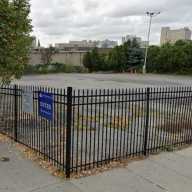City contractors will “remove and dispose of” some 2,000 Canada geese in about 40 locations, including Fort Totten and Flushing Meadows-Corona Park, according to a recent statement by Mayor Michael R. Bloomberg.
“The serious dangers that Canada geese pose to aviation became all too clear when geese struck US Airways Flight 1549,” Bloomberg said in a statement on Thursday, June 11.
Since the incident on January 15, when 155 occupants of the Airbus 320 splash-landed in the Hudson River after a bird-strike, the Federal Aviation Administration has released figures showing 197 incidents involving birds at LaGuardia Airport.
Two of the prior incidents led to emergency landings, one at JFK and one at Newark Liberty Airport.
Earlier this year, New York City Wildlife Hazard Management Steering Committee, which includes the city Port Authority, state and federal officials, was formed to deal with the problem.
“The incident served as a catalyst to strengthen our efforts in removing geese from – and discouraging them from nesting on – city property near our runways,” Bloomberg said.
Workers from the U.S. Department of Agriculture will collect the geese between now and the end of July, a period when they normally “molt,” or lose feathers, so they can’t fly. According to published reports, Federal wildlife officials will net and euthanize the 40 city parks and other locations near the airports.
The Port Authority will train and arm supervisors to shoot the birds in an emergency situation, reports said.
The U.S. Fish and Wildlife Service, under the Migratory Bird Treaty Act, has issued a permit to the USDA to capture and remove Canada geese, which in this instance pose a public safety hazard.
In addition, low-lying areas on Rikers Island that attract geese and other waterfowl will be filled in to reduce bird populations there. Half the cost of these operations will be paid by the Port Authority, according to the statement.
“They know how to do it as humanely as possible,” said Deputy Mayor Ed Skyler, noting that federal authorities will work with the Parks Department to figure out the least disruptive time to remove the geese.
Studies have shown that Canada Geese will often abandon long-migrations when they find a plentiful food source. According to Skyler, studies have shown that geese in the city stay within five miles of their nesting grounds.
According to Port Authority Executive Director Chris Ward, the agency is also installing a trial program of bird radar-detection and hiring a second wildlife biologist to investigate other ways to cut the bird population.





























